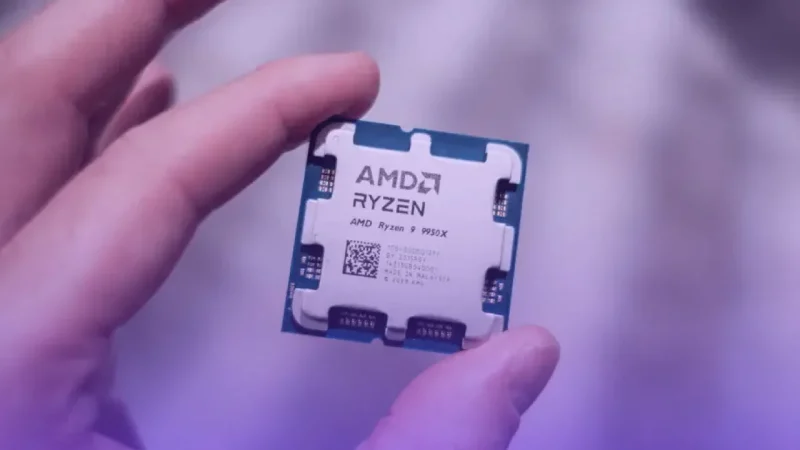AMD’s (NASDAQ: AMD) CEO, Lisa Su, recently took the Computex stage in Taiwan to unveil her company’s latest artificial intelligence processors, as well as a detailed plan to develop AI chips over the next two years in a bid to challenge industry leader, Nvidia (NASDAQ: NVDA). AMD stock witnessed a 1.26% uptick in pre-market trading following the news.
For a very long time, AMD has been competing with Nvidia, proving that it’s here to stay and challenge the AI giant, and the company’s new AI chips certainly prove that. Here are Lisa Su’s most important Computex announcements that all AMD stock investors should know about.
AMD’s New AI Chips
During the “lightning round” segment of his show on CNBC, Jim Cramer said that AMD under $150 would be terrific, and that it’s really good, but it doesn’t have what Nvidia has. Cramer’s comments show that AMD is still seen as playing catch-up to Nvidia, when the company has been making significant strides in the industry.
At the Computex technology trade show in Taiwan, Lisa Su introduced the MI325X accelerator, which is set to be made available in the fourth quarter of 2024, just in time to compete with Nvidia’s impressive Blackwell chips. AMD also introduced an upcoming series of chips titled MI350, which is expected to be available in 2025 and will be based on new chip architecture. Compared to the currently available MI300 series of AI chips, AMD said it expects the MI350 to perform 35 times better in inference, which is the process of computing generative AI responses.
Additionally, AMD revealed the MI400 series, which will arrive in 2026 and will be based on an architecture called “Next”. Su also said that AMD is aiming at an AI chip product cycle of one year. Similarly, Nvidia said it plans to release a new family of AI chips every year. Back in April, she said that the company expects AI chip sales of roughly $4 billion for 2024, an increase of $500 million from its prior estimate. And investors should definitely expect higher chip sales as the company releases more advanced AI chips.
The market for AI chips is expected to see accelerated growth. Indeed, this market is estimated to be worth $30 billion this year, and it is expected to exceed $100 billion in 2029 and top $200 billion in 2032, according to Precedence Research of Canada. While Nvidia is expected to own the majority of the market, even 10% of the market will result in AMD adding $20 billion to its revenue from AI chip sales by 2032, so the fact that AMD’s chips compete with Nvidia’s when it comes to price can be considered a bullish case for AMD stock.
New CPUs and NPUs
At the Computex event, AMD also said that its latest generation of CPUs will likely be available in the second half of this year. AMD is a market leader when it comes to CPUs, because while businesses generally prioritize spending on AI chips in data centers, some of the company’s CPUs are used in conjunction with GPUs, though the ratio is skewed in favor of GPUs.
The global CPU market is expected to reach a valuation of $100 billion by the end of 2030, with a compound annual growth rate of 10.5% from 2023 to 2030. In addition to that, AMD recently secured 33% of the server CPU market, taking market share from Intel (NASDAQ: INTC). Therefore, the introduction of new CPUs will help AMD take more market share, and if it manages to increase that market share to, for example, 50% by 2030, CPUs will add around $50 billion to the company’s total revenues.
AMD also detailed architecture for its new NPUs, which are dedicated to handling on-device AI tasks in AI PCs. There’s an even greater opportunity for the company in the NPUs market, as this market is expected to reach $238 billion by 2030. Chipmakers have been banking on added AI capabilities to drive growth in the PC market as it emerges from a years-long slump, with PC companies like HP (NYSE: HPQ) and Lenovo (OTCMKTS: LNVGY) saying that they will release devices that will include AMD’s AI PC chips, and AMD itself saying that its processors exceed Microsoft’s (NASDAQ: MSFT) Copilot+ PC requirements.
AMD Stock & the Path to $1 Trillion
Beth Kinding, the lead tech analyst at the I/O Fund, is bullish on both AMD and Nvidia, and she thinks that AMD will have around 10% to 25% of the GPU market by that same year, and both cases are really bullish for the company, as the GPU market is expected to reach $395.5 billion by 2030, so 10% of that would be $39.5 billion, and 25% would be $98.8 billion. She has previously said that AMD is completely underestimated when it comes to designing chips, while Intel isn’t at all that strong.
AMD’s current market cap is around $270 billion, so it has to double less than twice to reach a $1 trillion market cap. In order to reach $1 trillion by 2030, AMD’s market cap has to rise by an average of 24% over the next six years. At first glance, achieving that benchmark is not far-fetched. AMD’s data center revenue rose 80% in the first quarter of 2024 to $2.4 billion.
Even though that didn’t match Nvidia’s 262% overall revenue boost in the most recent quarter, it still shows that AMD derives some benefit from the massive demand for AI chips. Unfortunately for AMD, revenue shrunk by 4% yearly in 2023. Also, in Q1 of 2024, it rose by only 2% to $5.5 billion because massive declines in revenues from the company’s gaming and embedded segments offset most of the growth in client and data center revenue.
In addition to that, AMD saw two years of yearly net income declines. Also, even in Q1, net income of $123 million rose from a $139 million loss in the year-ago quarter. That indicates that while a negative cycle may be turning around, it is unclear how much that will help the stock. Therefore, the path to $1 trillion is not at all secured.
AMD Stock Forecast
The company’s relatively low profit level points to an elevated P/E ratio of 253, and this means that the forward P/E ratio of 49 probably better reflects its valuation. Nonetheless, the average forward multiple over the last five years is 35, indicating significant overvaluation. Also, its growth is not in a position to match Nvidia’s performance. The data center segment accounted for 43% of AMD’s revenue.
Therefore, even if AMD grows enough to match the percentage of revenue from AI chips, the bump will not be as dramatic as it was for Nvidia. But the good news is, two of the four segments, gaming and embedded, might likely benefit from an upcycle, as the current declines likely happened because of an inevitable pullback that came with the industry’s cyclicality. With the growth expected for all types of semiconductors and the massive demand for AI chips in mind, AMD stands a strong chance of reaching $1 trillion by 2030. But investors should keep in mind that this is a really volatile industry, and it’s too early to tell where the various chip sectors will find themselves in 2030.
With a six-year time horizon, AMD should really benefit from the high demand for chips. In other words, even if AMD’s market cap doesn’t reach $1 trillion in 2030, it will more than likely significantly exceed today’s $270 billion market cap.
Disclaimer
Please visit and read our disclaimer here.









